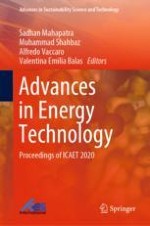2021 | OriginalPaper | Chapter
9. Differentiating Storage Essentiality in Thermoelectric and Non-thermoelectric Integrated Conventional Microgrid
Authors : Sasmita Jena, Shalini Patro, Subham Subhrajeet Barik, Sanjeeb Kumar Kar
Published in: Advances in Energy Technology
Publisher: Springer Singapore
Activate our intelligent search to find suitable subject content or patents.
Select sections of text to find matching patents with Artificial Intelligence. powered by
Select sections of text to find additional relevant content using AI-assisted search. powered by
